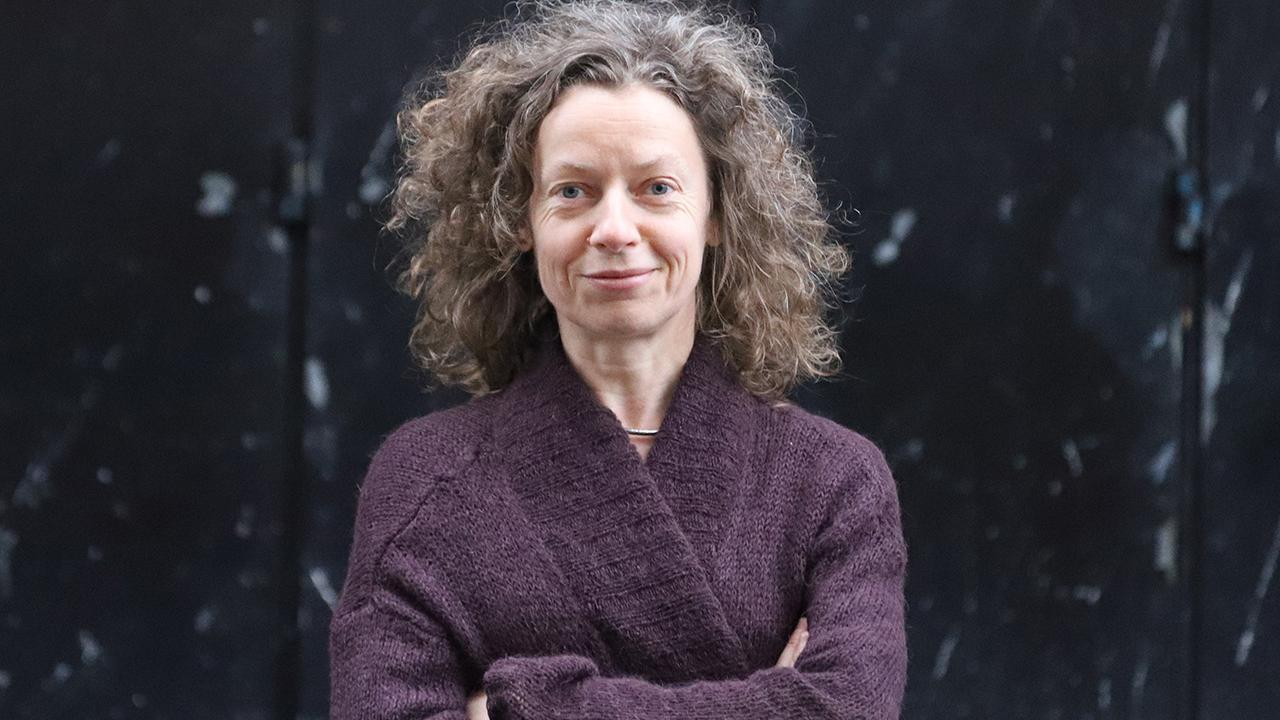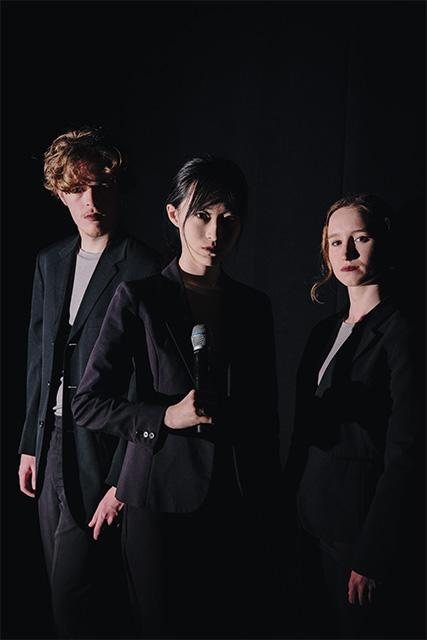
“Who’s There?” Explores the Fragmented Self and Search for Truth in Hamlet
UC Davis Granada Artist-in-Residence and Who’s There? director Sinéad Rushe and a crew of six student actors are turning William Shakespeare’s Hamlet inside out. The production, which debuts May 16 at the Wyatt Pavilion Theatre in Davis, seeks to explore human psychology through Hamlet’s shifting roles, thoughts and desires.
When, after killing the king, Hamlet’s uncle Claudius takes the throne instead of him, Hamlet seems to descend into a sea of madness and paranoia. In Rushe’s reimagining, the conflicting sides of Hamlet’s personality are given separate physical representations.

“We have a cast of only six and three of them are Hamlet,” Rushe said.
Students Peyton Harris, Noah Gu and Madeline Weissenberg will share the role.
“Hamlet is this big, iconic, famous part and, for me, there’s something beautiful about it not being held by a single voice or a single actor,” Rushe said. “Our Hamlet exists across three people who are different, different genders, different nationalities. There’s something expansive and hopeful about that.”
Rushe has been toying with new interpretations of classic works for years. She has created renditions of Sophocles' Antigone (AntigoneNOW was created alongside Department of Theatre and Dance Chair Margaret Laurena Kemp) and Shakespeare's Othello. In these productions, she had actors share a single role, giving voice to the varying facets of a person — what she calls “polyphonic characterization.”
“This approach is trying to blast through traditional notions of representation,” Rushe said. “I want to embrace the inherent complexity of human psychology, which is often not very coherent or singular."
"We all have many voices in our heads," she added. "I’m interested, also, in the inherent theatricality of the roles or parts people play in life to open up a more heightened sense of truth.”
Sharing the role is a practical consideration too — a way to deal with a character's many monologues and the time constraints of a quarter-long residency. In addition to doing table reads and holding rehearsals with students this spring, Rushe is also teaching a course on the Michael Chekhov Acting Technique, which emphasizes imagination and movement. Her book on the subject was published by Bloomsbury in 2019.
In Rushe's Hamlet adaptation, the remaining characters will be portrayed by students Fin Engels, Jenna Rodriquez, and Lily Qin. Qin will also play live violin. Original sound composition was created by Megan Abbanat, an undergraduate student.
Who's There? seeks to be thought provoking. But Rushe also wants to make the audience laugh.
“We’ve taken the scissors to the play — given some of our constraints — and that opens up a new terrain of play," she said. "We hope it’s fun and brings a sense of humor."
Role-playing and the search for authenticity
In Who's There?, Rushe highlights the “play within a play" theme depicted in the original Hamlet.
“There’s a whole line of language around what it is to put on a garment or to paint your face or to show one face and be another,” Rushe said. “Hamlet puts on an 'antic disposition' where he plays the part of a person losing their mind so well that no one knows whether he is actually mad or simply acting.”
Hamlet is constantly wondering who is on his side and who is against him, Rushe said. Meanwhile, the other characters are wondering the same thing about Hamlet, she said: "Is he serious or is he playing with me? Is he harmless or ruthlessly dangerous?"
"In a way, the search for self — who’s really in there? — is at the heart of our approach to it," Rushe said.
This interpretation is reflected in the adaptation's title Who’s There? (and the first line of Hamlet). It gets at questions of identity, representation and authenticity, both internally and externally.
For Rushe, the other key quote from Hamlet is when Polonius, advisor to the king, tells his son, Laertes, “This above all: to thine ownself be true.” She asks: What does it mean to be true to ourselves? Is there such a thing as one true self? Or, are we a jumble of conflicting parts that jostle and argue with each other?
These are questions that are pertinent to our time, according to Rushe. Not only do people crave authenticity — and are sometimes willing to accept a façade of authenticity – but the pandemic left many feeling alienated, internally fractured and questioning the roles they play in society.
When Hamlet's part — his ascendance to the throne — is usurped by his uncle, his internal and external worlds are fractured.
“Only one person can be king and our trio of Hamlets expresses the idea that Hamlet is not unified enough, nor has enough of a single purpose, to be a successful king like Claudius," Rushe explains. "We’re asking the question: what really is a king and who is entitled to play that role? Are you simply born to it, or is it whoever makes the most plausible pitch, wears the robe and crown with the most confidence? Isn’t it a role like any other?"
In order be truly convincing and to hold onto power, she said, the performance of 'king' needs to be played well. Would Hamlet even be capable of playing the role? Does he even want to?
Want to see the show?
Performances of Who’s There? are scheduled for May 16, 17, 18, 23, 24 at 7 p.m. and May 25 at 2 p.m. in the Wyatt Pavilion Theatre on Old Davis Road. Tickets start at $5.
